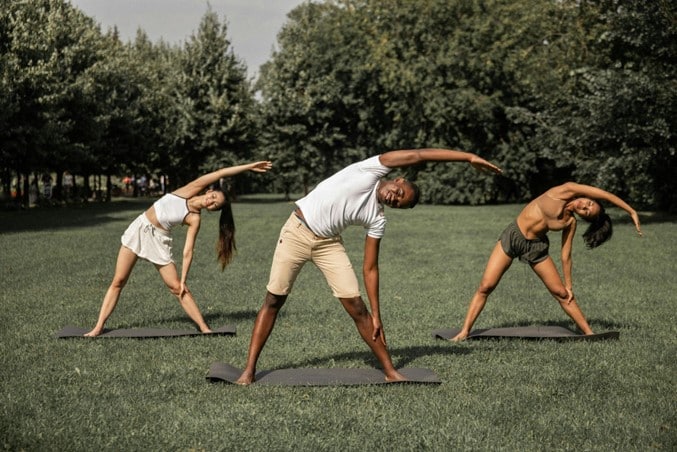If you’ve ever been depressed or struggled with anxiety, you’d know the feeling of wanting to curl up into the fetal position, just wishing to feel the slightest glimmer of hope. If only it were that easy. Ironically, the only way to avoid spiraling into a depressive state is to physically get up and get moving, despite how much your mind tells you to stay put. This is the point that will either make or break you – you can choose to isolate yourself or use exercise to start feeling good about yourself again. This article will highlight the benefits of staying active in times when anxiety and depression are all-consuming.
How staying fit can help
Exercise releases endorphins, the brain’s natural feel-good hormone. It also helps temporarily break repetitive negative thought patterns associated with anxiety and depression by shifting your focus towards a more positive mindset, such as thinking about reaching exercise goals (no matter how small). This is why the more active you are, the better you feel.
Apart from the emotional and mental gains of working out, there is also the physical aspect. Keeping fit is a great way to improve your overall physical health and confidence. When you look good, you feel good. Exercising also naturally encourages breathing, which ultimately regulates your nervous system and helps calm anxiety. Staying on the topic of calm, exercise involves repetitive, rhythmic movements, which can have a therapeutic effect on the body and mind.
Another benefit of exercising is the social aspect. Whether you decide to exercise with a friend or family member, join a gym or a fitness class, or even just take a walk around your neighborhood, you’re increasing opportunities to meet and interact with people. Having a good support structure is so important when coping with anxiety and depression.
How to get started
Exercising does not need to take up too much of your time, particularly when getting started. The recommended physical activity level for an adult is, on average, 150 minutes per week. That’s approximately 21 minutes per day over seven days. This is highly achievable, even if you’re not taking the formal approach to exercising. Just taking the stairs instead of getting in an elevator throughout the day can be considered a workout.
With that said, developing a good exercise regime and sticking to it shouldn’t feel like a task. It might be difficult at first, especially if you’re having feelings of depression and anxiety, but it is important to train your mind to treat exercise as a habit rather than just something that needs to get ticked off a to-do list.
If you’re struggling to get started, there is always help and support available to you. Mental health professionals, such as therapists or counselors with an online Masters in Mental Health Counseling or similar qualifications, are well-equipped with the necessary knowledge and tools to guide you along your path to easing your anxiety.
Types of exercises
If you struggle with anxiety, consider partaking in calming exercises that allow you to feel grounded. A good example of this could be walking or light jogging, especially in nature, as this requires rhythmic physical movement and breathing. Yoga or Tai Chi are also excellent ways to promote relaxation as these combine deep breathing, mindfulness, and gentle movement that work to reduce stress hormones.
Depression, on the other hand, may require doing exercises that are a little more energizing to boost your mood. Dancing would be an excellent place to start. Even if you have two left feet, just putting on some music and busting a move in your own space with no one watching can lift your spirits immensely. Another good way of combating depression would be to join a group fitness class, as being around others will eliminate feelings of isolation and also help to create a sense of motivation to want to keep going.
An important thing to note is that exercise is not a one-size-fits-all practice. What works to make others feel good might not work for you. Therefore, some level of trial and error may be necessary at the start, which can lead to a separate set of frustrations. Be open to trusting in the process – it may not always be easy, but once you find your rhythm, it will be worth it.


